|
|
Post by SKORIC on Sept 16, 2008 6:49:51 GMT -5
This thread is dedicated to Krajina Serbs.   History History During the period of the Ottoman-Habsburg wars there was constant population migrations in the territory of modern-day Croatia. The Habsburgs created the Military Frontier out of territory of the Croatian Crown as a defense against the Turks, and greatly expanded it further upon reconquering large territories the Ottomans conquered from Croatia. The Frontier (i.e. the "Vojna Krajina") was mostly inhabited by Serbs and Vlachs the Turks had settled there. Large numbers of Croats abandoned their homes and moved northward seeking safety, some even going out of Croatia altogether into Austria. The Ottomans, on the other hand were settling, first orthodox Vlachs, and then Serbs in the area. The Serbs fleed to the Ottoman side of the border due to Turkish persecution, and became frontiersmen for the Habsburgs in exchange for land and liberty. The only requirement for their permanent stay in the region was to serve a certain amount of years in the Habsburg army, after which they would be granted land, becoming free peasants. Serbs were thus regarded as some kind of military class.    ^ Serbian Frontiersman from Pomoriðje 18th century ^ Serbian Frontiersman from Pomoriðje 18th centuryThe Military Frontier was a separate political unit created from the territory of the Kingdom of Croatia for the protection of Habsburg lands against constant Ottoman raids and attacks. At the beginning of the 1880s it was returned to civilian Croatia. Serbian and Vlachs frontiersmen defended the Habsburg provinces from the Turks. In the territory that was part of the Military Frontier, the Serbs constituted an ethnic majority; this remained so until the Croatian War of Independence.  The area of the Military Frontier was reunited with the Kingdom of Croatia and Slavonia in the year 1881 after Bosnia and Herzegovina had been occupied by Austro-Hungary. Until the unification with Croatia, the Military Frontier Vice-Ban was always of Serb nationality. During the last two decades of the 19th century Croatian Ban (Viceroy) Khuen Hedervary (a Hungarian), relied on Serb parties in the Croatian parliament to maintain a governing majority. Because of this the Serbs came to occupy a disproportionate share of civil service posts in Croatia, causing resentment on the part of the majority Croatian population. World War IIDuring World War II, the Axis powers occupied Yugoslavia, partially partitioning it and creating the Independent State of Croatia, with the Ustaðe movement installed at its head. The Ustaðe enacted racial laws aimed primarily against the Serbs. Catholic monks and priests, including Archbishop Sari¿ of Sarajevo (nicknamed the "Hangman of Serbs"), supported forcible conversions and were largely silent about the killings. The regime set about a policy of "racial purification" against Serbs, Jews and Gypsies. The Ustaðe authorities declared that one-third of the Serbian population would be deported, one-third converted to Roman Catholicism, and one-third killed. In addition, the regime organized extermination camps, the most notorious of which is the Jasenovac concentration camp, where Serbs, Jews, Gypsies, and anti-fascist Croats were massacred in large numbers. Between 330,000 and 500,000 of Serbs in the Independent State of Croatia were killed by the Ustase during the war.  1991 - 1995 1991 - 1995the Croatian War of Independence, began when Serbs in Croatia who were opposed to Croatian independence announced their secession from Croatia. The move was in part triggered by a provision in the new Croatian Constitution that replaced the explicit reference to Serbs in Croatia as a "constituent nation" with a generic reference to all other nations, and was interpreted by Serbs as being reclassified as a "national minority". This was coupled with a history of distrust between the two ethnic groups dating back to at least both World Wars and the inter-war period. The federally-controlled Yugoslav People's Army (JNA) was ideologically unitarist, and predominantly staffed by Serbs in its officer corp, thus it also opposed Croatian independence and sided with the Croatian Serb rebels. Since the JNA had disarmed the Territorial Units of the two northernmost republics, the fledgling Croatian state had to form its military from scratch and was further hindered by an arms embargo imposed by the U.N. on the whole of Yugoslavia. The Croatian Serb rebels were unaffected by said embargo as they had the support of and access to supplies of the JNA. The border regions faced direct attacks from forces within Serbia and Montenegro, and saw the destruction of Vukovar and the shelling of Dubrovnik.Meanwhile, control over central Croatia was seized by Croatian Serb forces in conjunction with the JNA Corpus from Bosnia & Herzegovina, under the leadership of Ratko Mladic. These attacks were marked by the killings of captured soldiers and heavy civilian casualties. and were the subject of war crimes indictments by the ICTY for elements of the Serb political & military leadership. In January 1992, the Vance peace plan proclaimed UN controlled (UNPA) zones for Serbs in territory claimed by the rebel Serbs as the Republic of Serbian Krajina and brought an end to major military operations, though sporadic artillery attacks on Croatian cities and occasional intrusions of Croatian forces into UNPA zones continued until 1995.  The fighting in Croatia ended sometime in the summer of 1995, after the Croatian Army launched two rapid military operations, codenamed Operation Flash and Operation Storm, in which it managed to reclaim all of its territory except the UNPA Sector East bordering Serbia. Most of the Serbian population in these areas became refugees, and has been the subject of war crimes indictments by the ICTY for elements of the Croat military leadership. The remaining Sector East came under UN administration and was reintegrated to Croatia in 1998. 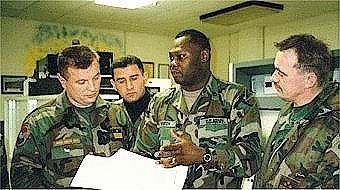 Tensions in modern Croatia Tensions in modern CroatiaTension between Serbs and Croatians were violently high in 1990s. The violence has reduced since 2000 and has remained low to this day, however, significant problems remain. The participation of the largest Serbian party SDSS in the Croatian Government of Ivo Sanader has eased tensions to an extent, but the refugee situation is still politically sensitive. The main issue is high-level official and social discrimination against the Serbs. At the height levels of the government, new laws are continuously being introduced in order to combat this discrimination, thus, demonstrating an effort on the part of government. For example, lengthy and in some cases unfair proceedings, particularly in lower level courts, remain a major problem for Serbian returnees pursuing their rights in court. In addition, Serbs continue to be discriminated against in access to employment and in realizing other economic and social rights. Also some cases of violence and harassment against Croatian Serbs continue to be reported. The property laws allegedly favor Bosnian Croatians refugees who took residence in houses that were left unoccupied and unguarded by Serbs after Operation Storm. Amnesty International's 2005 report considers one of the greatest obstacles to the return of thousands of Croatian Serbs has been the failure of the Croatian authorities to provide adequate housing solutions to Croatian Serbs who were stripped of their occupancy rights, including where possible by reinstating occupancy rights to those who had been affected by their discriminatory termination. In 2005 and 2006, the presidents Mesiã of Croatia and Tadiã of Serbia exchanged official visits and met with the respective national minorities of their respective countries. |
|
|
|
Post by SKORIC on Sept 16, 2008 7:09:08 GMT -5
Prominent individualsMany famed ethnic Serbs were born in what is today's Croatia, including:  Nikola Tesla Nikola Tesla (Serbian Cyrillic: Никола Тесла) (10 July 1856 – 7 January 1943) was an inventor and a mechanical and electrical engineer. Born in Smiljan, Croatian Krajina, Austrian Empire, he was an ethnic Serb subject of the Austrian Empire and later became an American citizen.[2] Tesla is best known for many revolutionary contributions in the field of electricity and magnetism in the late 19th and early 20th centuries. Tesla's patents and theoretical work formed the basis of modern alternating current electric power (AC) systems, including the polyphase power distribution systems and the AC motor, with which he helped usher in the Second Industrial Revolution. Contemporary biographers of Tesla have regarded him as "The Father of Physics", "The man who invented the twentieth century"[3] and "the patron saint of modern electricity."[4] After his demonstration of wireless communication (radio) in 1894 and after being the victor in the "War of Currents", he was widely respected as one of the greatest electrical engineers who worked in America.[5] Much of his early work pioneered modern electrical engineering and many of his discoveries were of groundbreaking importance. During this period, in the United States, Tesla's fame rivaled that of any other inventor or scientist in history or popular culture,[6] but due to his eccentric personality, seemingly unbelievable and sometimes bizarre claims about possible scientific and technological developments, Tesla was ultimately ostracized and regarded as a mad scientist.[7][8] Never having put much focus on his finances, Tesla died impoverished at the age of 86. The SI unit measuring magnetic flux density or magnetic induction (commonly known as the magnetic field B), the tesla, was named in his honour (at the Conférence Générale des Poids et Mesures, Paris, 1960). Aside from his work on electromagnetism and electromechanical engineering, Tesla has contributed in varying degrees to the establishment of robotics, remote control, radar and computer science, and to the expansion of ballistics, nuclear physics,[9] and theoretical physics. In 1943, the Supreme Court of the United States credited him as being the inventor of the radio.[10] Many of his achievements have been used, with some controversy, to support various pseudosciences, UFO theories, and early New Age occultism. Tesla is honored in Serbia and Croatia, as well as in the Czech Republic. He was awarded the highest order of the White Lion by Czechoslovakia. Because of this, he is alternately considered a luminary in the field of science and one of the symbols of personified pride for eastern Europe.  Milutin Milanković Milutin Milanković (Serbian Cyrillic: Милутин Миланковић) (May 28, 1879, Dalj, West Syrmia region, near Osijek, Kingdom of Croatia-Slavonia, Austria-Hungary, now Croatia – December 12, 1958, Belgrade, Yugoslavia, now Serbia) was a Serbian civil engineer and geophysicist, best known for his theory of ice ages, relating variations of the Earth's orbit and long-term climate change, now known as Milankovitch cycles. In addition to his scientific work, Milanković always showed great interest in the historical development of science. He wrote a textbook on the history of astronomy, and two books on a popular level: Through Space and Centuries fictionalized the development of astronomy while the other, entitled Through the Realm of Science, dealt with the development of exact sciences. Milanković also published a three volume autobiography in Serbian, Recollection, Experiences and Vision, which was never translated. For this reason his son, Vasko Milanković, has completed a biography: My father, Milutin Milanković. Milanković was elected a corresponding member of the Serbian Academy of Sciences and Arts in 1920, a full member in 1924, a corresponding member of the Yugoslav Academy of Sciences and Arts in 1925, and a member of the German Academy of Naturalists "Leopoldina" in Halle; he was also a member of many scientific societies and related organizations, both in Yugoslavia and abroad.  Jovan Karamata Jovan Karamata (Serbian Cyrillic: Јован Карамата) (1902–1967) was one of the greatest Serbian mathematicians of the 20th century. Jovan Karamata was one of the most prolific mathematicians of his time. He published 122 scientific papers, 15 monographs and text-books as well as 7 professional-pedagogical papers. Karamata is best known for his work on mathematical analysis. He created the theory of regularly-varying sequences and theorems of Tauberian type: today described as Karamata's Tauberian theorems. Karamata also added to numerous other theorems, including the Weierstrass theorem, Schmidt theorem, and Littlewood's theorem. These works, as well as those related to slowly varying functions, Mercer’s theorems, inequalities, trigonometrical integrals, Froullani’s integrals, and others have frequently been quoted in various papers. In 1935 he introduced the brackets and braces notation for Stirling numbers (analogous to the binomial coefficients notation), which is now known as Karamata notation. In Serbia, Karamata is immortalized in the "Karamata's (Yugoslav) school of mathematics”. Today, Karamata is the most frequently cited Serbian mathematician. He is the developer and co-developer of dozens of mathematical theorems and has a lasting influence in 20th century mathematics. He is also cited for Karamata's Inequality.  Josif Runjanin Josif Runjanin (Serbian Cyrillic: Јосиф Руњанин (Josif Runjanin); Croatian: Josip Runjanin; December 8, 1821–February 2, 1878) was a Serb from Croatia and composer (most notably composing the music for the Croatian national anthem). He was lieutenant-colonel in the Austro-Hungarian Army. Young Runjanin was baptized in the Orthodox shrine of the Descent of the Holy Ghost (Silaska Svetog Duha) in Vinkovci. The ceremony was carried out by the renowned local priest Adam Popović. He received education in Vinkovci, and then Sremski Karlovci. He was named "Josif" in accordance to Biblical traditions of the Serbs of his age. Between 1848 and 1866 he served in four Austrian military engages in Italy. In the age of 43 he married the daughter of the pensioned captain Toma Perković. As a representator of the First Banate regiment he entered the Croatian Assembly in 1865. In his youth, he served in the Imperial Army as a cadet in Glina, Military Frontier. There, he was introduced to the Illyrian circles, where he met Antun Mihanović. Josif composed music for his patriotic Croatian song Lijepa naša domovina in 1848, although this Croatian Anthem would be first played in the streets of Zagreb in 1891 during the Croatian-Slavonian exhibit, so both men only achieved post-mortal fame. While serving in Glina, he attained the rank of Captain, and became proficient in playing the piano, being taught by the military kapelnik of Glina. An obedient soldier, Josif later was later made colonel. After retirement, Josif moved to Novi Sad where he died at the age of 57 on 2 February 1878 and was buried at the Serbian Orthodox Ascension Cemetery (Uspensko groblje). During his lifetime he was recognized for having composed two major songs which are popular to this day: Music for the Croatian national anthem Lijepa naša domovino (Our beautiful homeland) Rado Srbin ide u vojnike (Gladly will the Serb enlist in the Army)  Jovo Stanisavljević - Čaruga Jovo Stanisavljević - Čaruga (Serbian Cyrillic: Јово Станисављевић - Чаруга, 1897 – February 27, 1925) was an outlaw, or hajduk, in Slavonia in the early 20th century. Jovo Stanisavljević ČarugaStanisavljević was born of Serbian parentage in the village of Bare (located near Naðice). His mother died when he was ten, and he went to locksmith school in Osijek. When the First World War broke out, he stopped his schooling and enrolled in the Austro-Hungarian Army. He soon decided to desert from the front lines posing as an officer, and succeeded in that. Shortly afterwards, he killed a man who was courting his girlfriend, and after a local nobleman threatened to arrest him, he killed him too. He was eventually apprehended, tried, and convicted, and started serving his sentence in the Sremska Mitrovica penitentiary. However, he managed to escape from prison and had a warrant posted on his capture. He went back home, but was unwelcome in the villages, so he started living in the woods. There he befriended the outlaw group Kolo gorskih tića (trans. a band of mountain birds) composed mostly of deserters, who all detested the rich Slavonian peasants and robbed them mercilessly, and were not afraid of killing people either. The war was long over, but Čaruga and the tići were still pillaging the countryside, and became hunted by the Yugoslav gendarmerie. Eventually in 1922 he decided to leave for Zagreb, where he posed as a rich gentleman from Vinkovci and also continued his life of thievery. He would later return to Slavonia to continue stealing together with his group members. On October 14, 1923, however, they attempted to rob the Eltz family estate in Ivankovo near Vinkovci. They killed one person at the site but another one sneaked out and called the gendarmerie. After the skirmish that ensued they managed to escape but without their loot. More importantly, the police got on their trail and soon captured them. By February, 1925, Čaruga's trial at the court in Osijek was finished, and he was subsequently hanged in front of a crowd of 3,000. His nickname Čaruga comes from the Turkish word čaryk for opanak. He's also been referred to as "Nikola Drezgić" and "Mile Barić", and affectionately yet wrongly as the "Robin Hood of Slavonia". Čaruga's demise attracted a lot of popular attention at the time, and numerous popular books, and a 1991 motion picture Čaruga by Rajko Grlić, have appeared since. He remains a well-known historic figure in the Balkans.  Mihailo Mer¿ep Mihailo Mer¿ep (Dubrovnik, 1864 – Belgrade 1937), Serb flight pioneer. Born in Dubrovnik in a tradesman family, then a part of Austria-Hungary, Mer¿ep started his primary education in Kladovo, Serbia and finished on the other side of the Danube in Turn-Severin (today Drobeta-Turnu Severin in Romania), He returned to his native town in 1878 where he worked as a merchant though his main interests lay in photography. At the beginning of the 1880's he moved to Belgrade where he was one of the co-founders of the first Serbian velocipede society (1884). In 1893 he embarked on a spectacular bicycle journey: he was to ride his bike from Belgrade to Chicago (with ship transport from Hamburg to New York) to be there in time for the World Expo and second world championship in bicyclism. In Chicago Mer¿ep witnessed some attempts of flying. Next four years he spent in Dallas where he embarked on a cyclist career. In 1897 he returned to Serbia this time cycling from Dallas to New York and again from Hamburg to Belgrade. In 1898 Mer¿ep joined with the Belgrade cycling champion publisher Sveta Savi¿ and actor Ljuba Stanojevi¿ and together they cycled through “Serb Lands”: across Bosnia and Herzegovina to Montenegro and then across Boka Kotorska to Dubrovnik. At the beginning of the 20th century Mer¿ep moved to Zagreb where he opened a photo studio. Apart from cycling he was now also in motorcycling and cars, organizing some of the first car “tours” in Croatia. In one cycling race he met Slovene Edvard Rusjan, who was also interested in airplanes. Since in Rusjan was already close to finishing his bi-plane EDA I that flew on 25 November 1909 - an event marked as the first flight of any South Slav. During 1910 Edvard Rusjan built seven more planes with various successes. After Mer¿ep gave Rusjan the much needed financial help, they joined in and built a hangar in Zagreb where Mer¿ep planned a production of aircraft for the market. A supplemented variant of EDA VI was named Mer¿ep-Rusjan. This monoplane proved to be far better than the previous and rose to a record height of 28 meters, 4 meters above the previous maximum achieved by Louis Bleriot. With this height Rusjan was able to make a flight over Zagreb in late 1910. However, the first Serbian air meeting in Belgrade in January 1911 was fatal for Rusjan. Mer¿ep continued work with Edvard's brother Josip and produced three more aircraft in which they trained pilots and gave many performances across Austria-Hungary. Mer¿ep's success was crowned in 1912 when he was declared the best pilot of the Empire. In the meantime Mer¿ep became the member of Serb Sokol association in Zagreb (1909). After the assassination of Archduke Franz Ferdinand of Austria in 1914, Mer¿ep was jailed as a declared Serb nationalist. After six months and many interventions of his friends he was out of prison only to find out that his hangar and workshop have been destroyed by the anti-Serb mob. This was the last of Mer¿ep’s pilot and constructionist career. After the Great War, Mer¿ep initiated the founding of aero club in Zagreb in 1925 and was one of the founders of the Aero-Club of the Kingdom of Serbs, Croats and Slovenes in the same year.
|
|
|
|
Post by SKORIC on Sept 16, 2008 7:21:32 GMT -5
 Momcilo Djujic Momcilo Djujic (Serbian: Момчило P. Ђујић) (February 27, 1907 - September 11, 1999) was the Serbian Chetnik commander of the Dinara Chetnik Division, with the title of Vojvoda The first call to arms in occupied Europe issued by the future leader of the Third Serbian Uprising, General Dragoljub Draza Mihailovic, quickly spread throughout Montenegro, Hercegovina, eastern and central Bosnia and the border area of Bosnia, Lika and Dalmatia. The commander of the Dinara Chetnik Division was Duke Momcilo R. Djujic (born in the village of Topolje near Knin in 1907- died in San Marcos, California in 1999), a famed leader and later one of the bravest Serbian commanders under the authority of General Mihailovic. After the fall of Yugoslavia, the Nazis created the Independent State of Croatia which included much of the traditional Serbian land. After its formation, Germans gave nominal control of this creation to the vicious Croatian Nazis called Ustasa. Ustasa put forward a plan that would lead to the complete eradication of the Serbian people west of the river Drina. So, in the first weeks of existence of the Independent State of Croatia, tens of thousands of Serbs were slaughtered in the most brutal ways. This forced Serbian people to form a spontaneous, unorganized resistance movement. Local leaders spontaneously started organizing people into small fighting units. These units had to individually arm themselves and seek help wherever they could. In the Serbian lands included in the Independent State of Croatia, Chetnik resistance developed under different circumstances and had a different character from the resistance in Serbia itself. While in Serbia resistance sprang up as a libratory movement, the primary goal of the Serbian resistance in the Independent State of Croatia was physical preservation of the Serbian people from complete genocide conducted by the Ustasa. That is the main difference between the resistance movements in Serbia and Montenegro and those in the Serbian land incorporated in the Independent State of Croatia. The uprising started in the Bosnian city of Drvar and later spread to hundreds of places on the border area of Bosnia, Lika and Dalmacia. After Drvar, the resistance fighters managed to quickly liberate Bos. Petrovac, Srb, Gracac, Bos. Grahovo, and areas around Knin. The Chetnik resistance fighters liberated most of the western Serbian lands. The liberation brought much needed relief to the suffering Serbian people. Đujić was regarded as the protector of Krajina Serbs by many Serbs from Dalmatia, Kordun, Banija, Lika and Slavo In the testimony of rebel Croatian Serb leader Milan Babić, Momčilo Đujić supported financially the rebellion of Croatian Serbs in 1990's 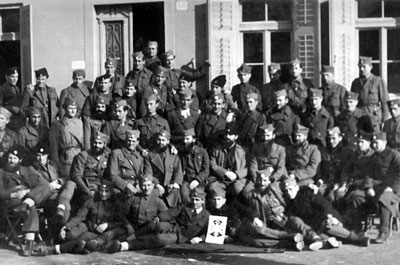 |
|
|
|
Post by SKORIC on Sept 16, 2008 7:59:48 GMT -5
 Dragan Vasiljkovic Dragan Vasiljkovic, nicknamed Kapetan Dragan, was a founder and captain of the Serbian paramilitary unit called Knindže (Nicknames: Knin ninjas, Red berets). He is accused of war crimes by the Republic of Croatia He worked as a golf instructor in Australia. He was also a presidential candidate of Serbia in 1991, flew a single engine aircraft PA32 (N3507W) across the Atlantic in 1990, sailed around the world (SY THYNDERCHILD - cutter rig) and is a golfer single figure handicap. Dragan also helped with securing the Radio station Studio B and B92 in Belgrade during popular uprising against Slobodan Miloševiæ. Dragan Vasiljkoviæ was born December 12, 1954 in a Serbian Orthodox family. In 1967 he went to Australia with his mother and two siblings under the name Daniel Snedden. After he finished high school in Melbourne he worked in a photo shop. He spent 4 years in the Australian Army's reserve unit 4th/19th Prince of Wales's Light Horse. After his military service, he served as a weapons instructor in Africa and South America. He was sailing around the world and stayed in Serbia in 1988 where he set up a boat and airplane charter business. He returned to Belgrade in May 1990, as Croatia elected Franjo Tudjman's HDZ to a parliamentary majority. In Belgrade, Captain Dragan met Krajina Serbs at a local coffee bar. He met Sasa Medakovic, one of the defenders of the barricades in Krajina following the Log Revolution in August. Medakovic was a friend of Knin chief of police Milan Martic and was an employee of Krajina state security. Captain Dragan visited Krajina in the autumn 1990 and witnessed a "primeval fear on the part of the Serbs who lived in the area", and "their fear was most sincere". There, he met Milan Martic and noticed that the defence of Krajina appeared "very disorganised". He thus decided to help organise the Krajina defence. "I could help introduce some discipline into this defence and kill many enemies", he said. When he met Martic, he was told "We went to the beds of our great grandfathers where we slept over the past 600 years, and the next day we woke up not knowing whether we would live until next week." On his return to Belgrade, he attempted to gather support for his effort. He was a member of the opposition Serbian Renewal Movement and through a fellow member, Srba Milanov, was able to meet "members of the service". He then returned to the United States to complete his aviator training. On 25 June 1991, Croatia proclaimed its independence. Soon after, war broke out in the Krajina. He served during the Croatian War of Independence under the newly-created Republic of Serbian Krajina as a volunteer. He commanded special units known as Red Berets (not to be confused with the Special Operations Unit or JSO founded in Serbia in 1996) or Knindže after the Krajina's capital of Knin and ninja fighters. He trained units at Krajina's Golubiæ training camp. He was allied with Interior Minister Milan Martic in his power struggle with President Milan Babic, whom he described as "dishonest, a man who was not of his word." Martic, in contrast, he considered to be "a man of honour and a man of his word." In November 1991, Babic called Vojislav Seselj to Knin to help him thwart what he believed to be a coup attempt being planned by Captain Dragan himself. According to Seselj, "Captain Dragan interfered and started a rebellion among the army ranks", and organised a rally of military personnel. Seselj toured the front lines and in the media explained to people that "those who want internal conflicts while an armed clash is still going on cannot be friends of the Serb people." He also met Captain Dragan near the front at Benkovac. The rally, Seselj said, proved a failure and Babic remained in power. Not long after, however, a plan for freezing the conflict was offered to the parties; the Vance Plan. Here Milan Martic supported the plan, as did the leadership in Belgrade. Babic opposed it. During this time, Vasiljkoviæ left Krajina as a result of the dispute. Babic soon was forced from power and the Vance Plan was adopted. Krajina thus became a United Nations Protected Area. Following the June 1992 Croatian attack on the UN Protected Area at the Miljevac plateau, Vasiljkoviæ returned to Krajina and became an officer in the Krajina army, based in Bruska, Benkovac, serving as an instructor and training adviser, appointed to this post by General Novakovic. During the war, he founded the Fond Kapetan Dragan aimed at helping victims of war. The foundation was the largest in the history of the Balkans, 67,000 victims of war received aid. In May 1995,Croatian forces overran the United Nations Protected Area's Sector West in Operation Flash. In August, it overran Sectors North and South during Operation Storm. As a result of the latter attack, Sector East, still under Krajina rule, was subject of an agreement to have it placed under Croatian rule in 1998. After this defeat, Vasiljkoviæ returned to Perth, Western Australia. Dragan was teaching golf in Perth when the Australian Newspaper printed a front page article saying that a war criminal was living in Perth and teaching golf. Dragan lodged a public defamation case against Nationwide News for the article which was to commence in the first week of February 2006. Dragan was arrested on the basis of a Croatian warrant on 19th January and has been in prison since.  |
|
|
|
Post by SKORIC on Sept 16, 2008 9:07:43 GMT -5
Religion and ChurchesThe Serbs of Croatia are Serbian Orthodox. There are many Orthodox monasteries across Croatia, built since the 12th century. Most notable are the Krka Monastery, Krupa Monastery, Dragoviæ Monastery, Lepavina Monastery and Gomirje Monastery. Many Orthodox churches were demolished during the recent war, while some were rebuilt by the Croatian government with money partially donated by the Serbian diaspora. Krka Monastery  Krka Monastery is a Serb Orthodox monastery dedicated to the Archangel Michael, located near the river Krka in central Dalmatia, Croatia. It is the best known monastery of the Serb Orthodox Church in Croatia and it is officially protected as part of the Krka National Park. The monastery was founded by Jelena, sister of the Serbian emperor emperor Dušan, wife (and later widow) of a local duke Šubiæ. This monastery was built on the foundations of an earlier one. The monks of this monastery in the 17th c. were forced to flee from from Ottomans. They've found shelter in Zadar, where pope Innocent X in 1655 gave them two churches, that were the ownership of Franciscans of the Third Order, the "Glagolitians" (glagoljaši) . The last destruction in the history of the monastery happened after Operation Storm in 1995 when the monastery was looted by Croatian para-militaries and the seminary shut down. Some of the damage was since repaired and the seminary was reopened in 2001, but the priceless stolen property of prominent cultural heritage hasn't been found. Dragovic Monastery  ^ Dragoviæ Monastery desecrated in the 1990s ^ Dragoviæ Monastery desecrated in the 1990sThe monastery was founded by Serbian Orthodox peasants in Cetinska Krajina in 1395 close to the river of Cetina, close to Vrlika. Its protector was Moravian Prince Stefan Lazareviæ. Many times throughout its history it was raised and passed through hard times.
|
|
|
|
Post by SKORIC on Sept 16, 2008 23:42:19 GMT -5
|
|
|
|
Post by SKORIC on Sept 17, 2008 0:34:37 GMT -5
Dinarska Divizija 1941 - 1945  Our Vojvoda! Our Vojvoda! Spremte se spremte Cetnici! Spremte se spremte Cetnici! Djujic giving a speech Djujic giving a speech Vojvoda Djujic with his bodyguards at the scouting point Vojvoda Djujic with his bodyguards at the scouting point 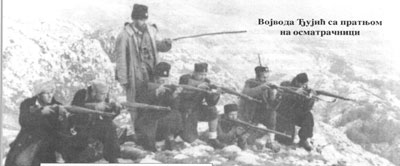 Gathering Gathering Stocking up weapons Stocking up weapons Part of the Protective battalion of the Dinara Chetnik Division Part of the Protective battalion of the Dinara Chetnik Division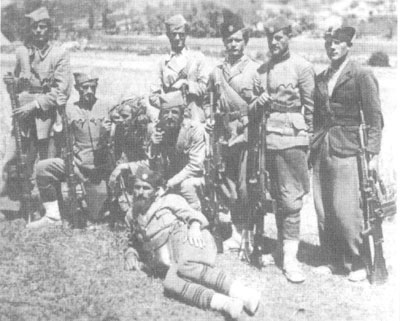 Vojvoda Djujic receives the blessing from His Holiness Patriarch Gavrilo Dozic in Slovenia, 1945. Vojvoda Djujic receives the blessing from His Holiness Patriarch Gavrilo Dozic in Slovenia, 1945.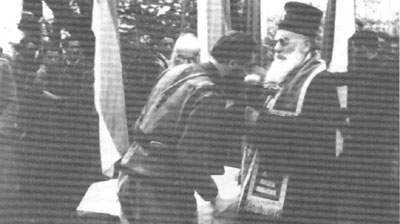 Vojvoda Djujic giving a speech to the gathered people in 1944. Vojvoda Djujic giving a speech to the gathered people in 1944.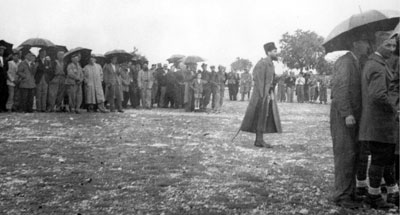 Vojvoda pop Momcilo Djujic Vojvoda pop Momcilo Djujic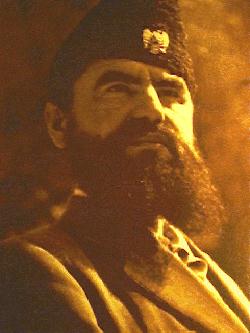 Pop Vatra Pop Vatra Vojvoda Brane Bogunovic Vojvoda Brane Bogunovic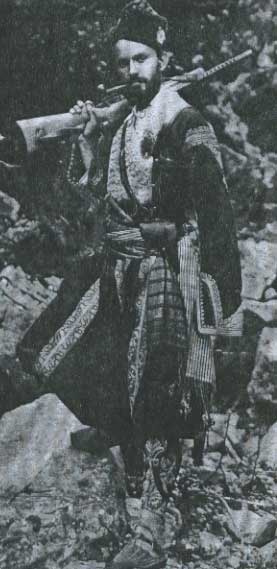
|
|
|
|
Post by SKORIC on Sept 17, 2008 9:46:56 GMT -5
Documentry made in 1968 by Lordan Zatranovic (A Croat) about Jasenovac.Facts about JasenovacLiving conditionsThe living conditions in the camp were extremely severe: a meager diet, deplorable accommodations and cruel behavior by the Ustaše guards. The conditions improved only for short periods during visits by delegations, such as the press delegation that visited in February 1942 and a Red Cross delegation in June 1944. Food: inmates of Jasenovac suffered of horrible malnutrition. The sorts of food they consumed changed during the camp's existence. In camp Brocice, inmates were given a "soup" made of hot water with strach for breakfast, beans for lunch and same for dinner (held in 6:00, 12:00 and 21:00 accordingly). Food in camp nr. III was at first better, potatoes instead of beans, but replaced in January or so to a single daily portion of thin "turnip soup". Food changed again, by the end of that year, to three daily portions of thin gruell made of water and starch.. Food changed again in September 1943, 1944, and in other occasions. Water: Jasenovac was one of the few camps in the holocaust where there was an actual lack of potable water Accomodations: In the first camps, Brocice and Krapje, inmates slept in standart concentration-camp barracks, with bunks in three levels. In camp nr. III, which housed some 3,000 inmates at any given time, inmates initiatly slept in the attics of the workshops, in an open depot assigned as a railway "tunnel" and in the open. Shortly thereafter, eight barracks were erected. Inmates slept in six of these barracks, while the other two used as a "clinic" and "hospital", where ill inmates were concentrated to die or be liquidated. Mass murder and cruelty In the late summer of 1942, tens of thousands of Serbian villagers were deported to Jasenovac from the Kozara mountain area (in Bosnia) where NDH forces were fighting against Partisans. Most of the men were killed at Jasenovac, the women were sent to forced labor in Germany, and the children were taken from their mothers; some were murdered and others were dispersed to Catholic orphanages. On the night of August 29, 1942, bets were made among the prison guards as to whom could liquidate the largest number of inmates. One of the guards, Petar Brzica reportedly cut the throats of some 1,360 newcommers or so with a butcher knife that became known as srbosjek ("serb-cutter"). The other participants, who admitted the deed to witnesses, were Ante Zrinusic, who killed some 600 inmates and Mile Friganovic, who gave a detail and consistant report of the incident. Friganovic admmitted to have killed some 1,100 people, of which he specificly tortured an old man, Vukasin, in forcing him, to bless Ante Pavelic, which he refused, although Friganovic would cut off his ears, nose and toungue after each refusal, eventually cutting his eyes, tearing his heart and slash his throat. The whole competition was also viewed by witness Dr. Nikola Nikolic. Prisoners remaining in Jasenovac were forced to drink water from the Sava river contaminated with ren (horseradish)Systematic extermination of the victimsBesides sporadic killings and death under poor living conditions, inmates that arrived in Jasenovac were, in a large number of cases, set for systematic extermination, rather than being concentrated and killed thereafter due to health impairment or sporadic killings. An important criteria for this selection was, to begin with, the duration of detention the inmate was doomed for. Inmates who were sentenced to less than 3 years of incarceration passed a selection, and the strong and labor-capable men were kept alive. All inmates sentenced to 3 years or not sentenced at all were taken to liquidation regardless of their fitness. The systematic extermination took place in various forms and in varied locations. Some of the methods were machinic, following the example of their Nazi patrons, while some were "manual". The machinical means of extermination included: Cremation: The Ustase cremated corpses, as well as living inmates, awake or stoned. The first cremations took place in the brick factory ovens as back as January 1942. Engineer Hinko Dominik Picilli further, perfected this method by turning 7 of the kiln's furnace chambers into more sophisticated crematories. Crematories were also placed in Gradina acros the Sava. According to the State-commission, "there is no information that it ever went into operation". But later testimonies say otherwise. In later stages of the war, exhumation of bodies that were killed and buried during the camp's existence was also conducted. Gassing and poisoning: The Ustase, in following the Nazi example, as set in Auschwitz and Sajmiste, tried to utilize poisonous gas to kill inmates that arrived in Stara-Gradiska. They first tried to gas the women and children that arrived from camp Djakovo with gas-vans that Simo Klaic addressed as "green Thomas". The method was later replaced with stationary gas-chambers with Zyklon-B and Sulphur monoxide.Manual methods, the Ustase's favorites, were liquidation that took part in utilizing sharp or blunt craftsmen tools: knives, saws, hammers and et cetera. These liquidations took place in various locations: Granik: Granik was a ramp used to unload goods of Sava boats. In winter 1943-44, season agriculture laborers became unemployed, while large transports of new internees arrived and the need for liquidation, in light of the Axis expected defeat, were large. Therefore, the "Maks" Luburic devised a plan to utilize the crane as a gallow on which slaughter would be committed, so that the bodies could be dumped into the stream of the flowing river. In the autumn, the Ustase NCO's came in every night for some 20 days, with lists of names of people who were incarcerated in the warehouse, stripped, chained, beaten and than taken to the "Granik", where ballasts were tied to the wire that was bent on their arms, and their intestines and neck were slashed, and they were thrown into the river with a blow of a blunt tool in the head. The method was later enhanced, so that inmates were tied in pairs, back to back, their bellies were cut ere they were tossed into the river alive. Gradina: The Ustase utilized empty areas in the vicinity of the villages Donja Gradina and Ustice, where they encircled an area marked for slaughter and mass graves in wire. The Ustase slew victims with knives or smashed their skulls with mallets. When gypsies arrived in the camp, they did not underwent a selection, but were rather concentrated under the open skies at a section of camp known as "III-C". From there the gypsies were taken to liquidation in Gradina, working on the dike (men) or in the corn-fields in Ustice (women) in between liquidations. Thus Gradina and Ustica became Roma mass-grave-sites. furthermore, small groups of gypsies were utilized as gravediggers that actually participated in the slaughter at Gradina. Thus the extermination at the site grew until it became the main killing-ground in Jasenovac. Grave-sites were also located in Ustica and in Draksenic. Mlaka and Jablanac: Two sites used as collection and labor camps for the women and children in camps III and V, but also as places where many of these women and children, as well as other groups, were liquidated at the Sava bank in between the two locations. Velika Kustarica: According to the state-commission, as far as 50,000 people were killed here in the winter amid 1941 and 1942. There are more evidence suggesting that killings took place there at that time and afterwards.End of the campIn April 1945, as Partisan units approached the camp, the Ustaše camp supervisors attempted to erase traces of the atrocities by working the death camp at full capacity. On April 22, 600 prisoners revolted; 520 were killed and 80 escaped. Before abandoning the camp shortly after the prisoner revolt, the Ustaše killed the remaining prisoners, blasted and destroyed the buildings, guard-houses, torture rooms, the "Picili Furnace" and the other structures. Upon entering the camp, the partisans found only ruins, soot, smoke, and dead bodies.During the following months of 1945, the grounds of Jasenovac were thoroughly destroyed by prisoners of war, 200 to 600 Home Guard members captured by the Allied forces. The laborers completed destruction of the camp, leveling the site and dismantling the two-kilometer long, four-meter high wall that surrounded it. en.wikipedia.org/wiki/Jasenovac_concentration_campNumber of victimsThere are various estimates about the number of victims who died in the Jasenovac camp. Estimates range from tens of thousands of deaths, which is the most commonly cited contemporary figure, to hundreds of thousands, which was the most common estimate prior to the 1990s. The estimates vary due to lack of accurate records, the methods used for making estimates and sometimes, due to differing biases of the estimators. Examples of difficulties in compiling accurate counts include: cases where entire families were exterminated with no one left to submit their names to the lists; inclusion of names of people who were killed elsewhere, or who survived but were not heard of, or that were duplicates.Statistical estimatesIn the 1980s, calculations were done independently by Croat economist Vladimir Žerjaviæ and Serb statistician Bogoljub Koèoviæ, who each claimed that total number of victims in Yugoslavia was less than 1.7 million, an official estimate at the time, both concluding that the number of victims was around one million. Žerjaviæ claimed that number of victims in the Independent State of Croatia was between 300,000 and 350,000, including 80,000 victims in Jasnovac, as well as thousands of deaths in other camps and prisons. Koèoviæ, who made an estimate of the total number of victims, accused Žerjaviæ of being motivated by nationalism: Zerjavic relies on the writings of Franjo Tudjman, a Croatian nationalist and holocaust revisionist. In the trail of Dinko Sakic, Zerjavic testified that the number of casualties is 85,000, as did Josip Jurcevcic, Sakic's defence witness. As Sakic, who also claimed no mass-atrocities took place in the camp, was indeed found guilty, Jurcevic testimony on the death rate, as that of Zerjavic, are held as non-reliable. Commentators in Serbia criticized these estimates as too low, since the demographic calculations assumed that the growth rate for Serbs in Bosnia (which was part of the Independent State of Croatia during the war time) was equal to the total growth rate throughout the former Yugoslavia (1.1% at the time). According to Serbian sources, however, the actual growth rate in this region was 2.4% (in 1921-1931) and 3.5% (in 1949-1953). This method is considered very unreliable by critics because there is no reliable data on total births during this period, yet the results depend strongly on the birth rate - just a change of 0.1% in birth rate changes the victim count by 50,000.Logically, the number of casualties in Jasenovac is affected by several factors:the camp's size: Jasenovac was a complex of various camps, including Krapje and Brocice, Ciglana, Stara-Gradiska, Sisak, Djakovo, Jablanac, Mlaka, Draksenic, Gradina and Ustice, Dubica, Kosutarica, Jasenovac's tannery. These camps and mass-grave yards covered 120 square miles. This fact is also important since in the list of names found in the Jasenovac memorial, only 4000 victims are of Stara-Gradiska, which points just how partial the list really is.The length of the camp's existance: Jasenovac stood since mid-August 1941 to May 1945. Mass-extermination took place in mass in the whole of 1941-1942, and again in the second half of 1944. From March to December 1943, a "lull" took place when almost no mass-atrocities took place, whilst death due ot health impairment or in indevidual slaugther (to wit, that any gaurd could kill any inmate at any given time) continued. The camp's classification: besides being a concentration camp, Jasenovac was an extermination camp. For comparison, Belzec and Kulmhof, both small and both existed for a significantly shorter period of time, exterminated over 300,000 and 128,000 accordingly. The camp's population: Jasenovac housed and used as a place of extermination for Serbs, Jews, Roma, Sinti, Slovens and other ethnicities, whereas in all extermination camps only Jews and Roma were exterminated, therefore, the number of casualties should be in accordance. Additionaly, Crematories were constructed in Jasenovac as back as January 1942, due to difficulties of burial, thus implying the massive death rate at hand there. The same goes for gassing that also took place in Stara-Gradiska later that year, in both chambers and vans.Pictures   Warning: Following pictures are brutalwww.ushmm.org/lcmedia/photo/lc/image/85/85196.jpgupload.wikimedia.org/wikipedia/commons/thumb/d/dd/Ustasaguard.jpg/320px-Ustasaguard.jpgwww.deltax.net/bissett/western/victims.jpgcache.virtualtourist.com/3120808-A_child_victim_of_Ustasi_concentraton_kamp-Jasenovac.jpgi43.photobucket.com/albums/e372/tlthe5th/croatia/priest.jpgwww.etleboro.com/picture_library/jasenovac.jpgetleboro.com/picture_library/jasenovac2.jpgmojasrbija.net/krajina/images/fbfiles/images/633443067735260271_jasenovac2.jpgwww.jasenovac-info.com/cd/galerija/djecakozare/1/26.jpg Warning: Following pictures are brutalwww.ushmm.org/lcmedia/photo/lc/image/85/85196.jpgupload.wikimedia.org/wikipedia/commons/thumb/d/dd/Ustasaguard.jpg/320px-Ustasaguard.jpgwww.deltax.net/bissett/western/victims.jpgcache.virtualtourist.com/3120808-A_child_victim_of_Ustasi_concentraton_kamp-Jasenovac.jpgi43.photobucket.com/albums/e372/tlthe5th/croatia/priest.jpgwww.etleboro.com/picture_library/jasenovac.jpgetleboro.com/picture_library/jasenovac2.jpgmojasrbija.net/krajina/images/fbfiles/images/633443067735260271_jasenovac2.jpgwww.jasenovac-info.com/cd/galerija/djecakozare/1/26.jpg
|
|
|
|
Post by SKORIC on Sept 17, 2008 13:08:35 GMT -5
|
|
|
|
Post by SKORIC on Sept 18, 2008 2:33:10 GMT -5
^^ Listen you. the serbs wanted access to the Adriatic ... the benefits of which were enormous. Croatia made 7.3 billion Euros this year based on that access on tourism alone ... so dont talk to me about not being serious. If u have something of value ie. the Adriatic you have to know how to protect it. We did that in 1995. Note when he says we, he means;  Little Gotovina in the background behind an American.  "Lemie see lemie see da planz!!!1!" |
|
|
|
Post by bob1389 on Sept 18, 2008 2:35:33 GMT -5
Note when he says we, he means;  Little Gotovina in the background behind an American.  Like a little mouse... It's funny how they had to bring in a black fella to teach them how to defend 'their land' So much for the macho Cro pride  |
|
|
|
Post by branislavnusic on Aug 31, 2018 3:00:09 GMT -5
Krajisnici have the best songs:
|
|



































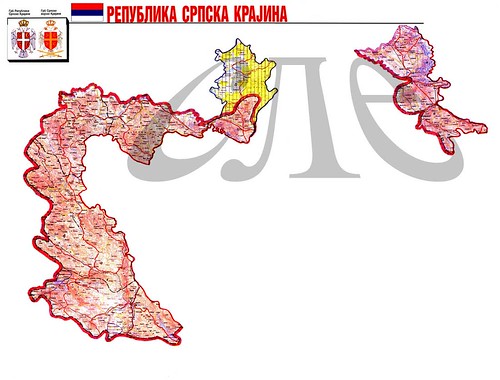

PR13-20MillionDinara-1993-donatedta_b.jpg)




























